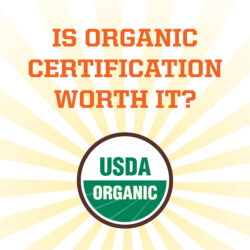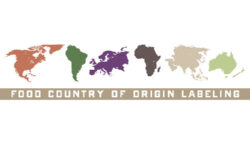I am seeing more and more food labeling issues arise lately, likely due to the fact that functional foods are on the rise, as is consumer awareness. Many brands are trying to maximize the positive aspects of their product on the package. However, seemingly innocuous wording on a package can have an extremely harmful impact on a business—and these are things a brand might not even consider as risks.
I’m sharing a few essential tips below so that you can be more prepared, and avoid the unnecessary hassle and expense of learning lessons the hard way. What I’m telling you here could save you huge amounts of money and hassle down the road—and even save some brands from going out of business.
1. Beware of using the words Healthy and Organic.
Healthy and Organic are highly regulated words. If these words appear inappropriately on a package that isn’t qualified to use it, then the FDA or USDA can come after you.
- To qualify as healthy (or any variants of the word), a product must meet specific nutrition requirements. If it doesn’t meet these requirements, then you can’t use the word healthy.
- If you have a nutritious product but it doesn’t qualify for use of the word healthy, you can use creative wording to convey the positive benefits about the product without actually using the word healthy. However, it is important that the wording is accurate and not misleading.
- In order to say that your product is organic, it must be certified organic and meet specific criteria. (Related post: Is Organic Certification Worth It?) If your product is not certified organic, then the only place you can say the word organic on the package is in the ingredient listing (or in the required company name listing on the information panel, if applicable—more on that below). In that case, it’s best to make the ingredients large, bold and mixed case (for greater legibility) to highlight the organic aspect.
2. Words in brand names can violate compliance.
I have seen brands with Organic and Healthy in their logos or tagline actually change their brand names because the products didn’t qualify for use of these words. They assumed that because it was in the logo and was the trademarked company name, that it was fine to use on the package. However, that is not the case.
- Per USDA regulation, products that do not meet the requirements for use of the word Organic can’t display logos or brand names that contain the word Organic. They may however display company names containing the word Organic on the information panel where the company name and address are required to be displayed.
- Per FDA regulation, products that do not meet the criteria for use of the word Healthy may not use the word anywhere on the package including in a logo or tagline.
3. Watch out for intervening material.
The FDA states that there must be no intervening material within the required information on the information panel. The required information consists of the nutrition facts, ingredients, required allergen warning if applicable for the 8 major allergens recognized by the FDA, company name and address, and country of origin if not made in the USA.
These are examples of what would be intervening material:
- Prefacing the word ingredients, at the beginning of the ingredient list, with additional words.
- Design elements such as motifs, dividers or decorations.
- Company URL, if not placed after the required information
- Allergen listings other than the 8 major allergens recognized by the FDA. If you list both required and non-required allergens, they must be separated so that the required allergens fall within the required information with the ingredients, and the non-required allergens are placed after the required information.
4. Don’t get cute or creative with your ingredient list.
The ingredient list must be straightforward and follow the regulation for ingredient listings on food labeling.
- Don’t include something intangible like Love in the ingredient list. The ingredient list must contain only the names of actual ingredients. Love is not an actual ingredient that you measure and mix in, therefore it cannot be in the ingredient list.
- Clearly denote which ingredients are organic. Don’t say “Made with organic ingredients:” followed by the ingredient list. This is both intervening material and not accurate, because it’s not clear which ingredients are organic and which are not. The list should be prefaced only by the word “Ingredients:” and each organic ingredient must be denoted as such by being prefaced with the word Organic, or placing and asterisk after each organic ingredient and then a footnote that denotes “*Organic.”
5. Make sure your product weight is accurate.
I have seen a brand go out of business because the product weights on their packages were incorrect. The Department of Weights and Measures does random checks in stores, weighed all their products, and found that most of them weighed less than the package stated, and trashed the offending products—in every store this brand was in.
- Even if you have an artisan product that varies in size and weight, it’s your responsibility as a brand to ensure that the weight on each package is accurate.
- Remember that even though overseeing departments can’t check every single product, they are diligent in doing random checks, and many brands come under fire in this manner.
6. Use the correct serving size.
Determining the serving size for your product is not based on what you decide to be the serving size.
- There is a Recommended Amount Customarily Consumed (RACC) for every product category, as specified by the FDA.
- How a product is packaged can affect its RACC. These exceptions are noted in the FDA regulation.
- Be sure your serving size follows the RACC for your product and packaging.
7. Beware of any claim you make.
I see this mistake more than any among retail food products. A brand may claim “loaded with nutrients,” “packed with minerals” or similar, or make a claim that a certain ingredient is good for your health in a certain way. Many brands don’t realize that they are making claims, but if you are “claiming” something about your product, then it is considered a claim.
- There are three types of claims recognized by the FDA: health claims, nutrient content claims, and structure/function claims.
- Different claim rules apply to supplements versus food products. A product is a supplement if it has the Supplement Facts panel on its labeling, and it is a food if it has the Nutrition Facts panel. For a food product contains supplement-like benefits, if it is labeled as a food product then any claim must adhere to the rules for food product claims only.
- Some claims may require additional verbiage to appear on the package because of the claim.
8. Don’t play copycat.
Many, many retail food products are not compliant. Even major brands have been pursued for packaging that does not comply with the regulation. Do not assume that it is OK to copy what another brand is doing, even a competitor in the same category, even a major consumer brand. It’s quite possible that their package may not be compliant, and it’s up to you as a brand to ensure your product is in compliance.
The FDA is not able to check every single package. If a discrepancy comes to their attention through a complaint or a random check, they will require the brand to correct it swiftly. This can have a devastating impact on any business. Make sure you invest in doing your packaging right the first time to prevent costly corrections later on.
To go further, be sure to also check out our FDA Food Labeling Guide Made Easy article.
If you have any questions, leave them in the comments below!
This article/blog is provided for information purposes only and does not constitute professional advice nor does it substitute for your reading and reviewing the applicable language from the FDA or USDA Organic regulations or obtaining advice from the appropriate professional regarding what is and is not required by the FDA or USDA Organic. This article/blog is not intended to provide advice and direction on how to comply with the FDA or USDA Organic requirements. The reader of this article/blog is urged to read the FDA or USDA Organic regulations and/or obtain the appropriate professional advice on the FDA or USDA Organic regulations. No professional, business or other advisory or economic relationship is created herein, and is some states these materials may be considered advertising.






We are bringing a food product from Germany to the US. Is it required to have the German manufacturing company name and address on the product or just the “Distributed by:” information of the US distribution company?
Thank you for you response!
Hi Jens,
It should be the name and address of the distributor, however the labeling must note Country of Origin as applicable: http://www.fda.gov/ICECI/ComplianceManuals/CompliancePolicyGuidanceManual/ucm074567.htm
Thank you for pointing out that making sure the servicing sizes and information stand up to regulation is critical for your labeling. About a week ago, I was talking to my sister, and she mentioned that she is going to open her own jam business! I want to help her get her name out through her label, but I will also tell her your tips for meeting regulations. Maybe we should look into labeling services that could help.